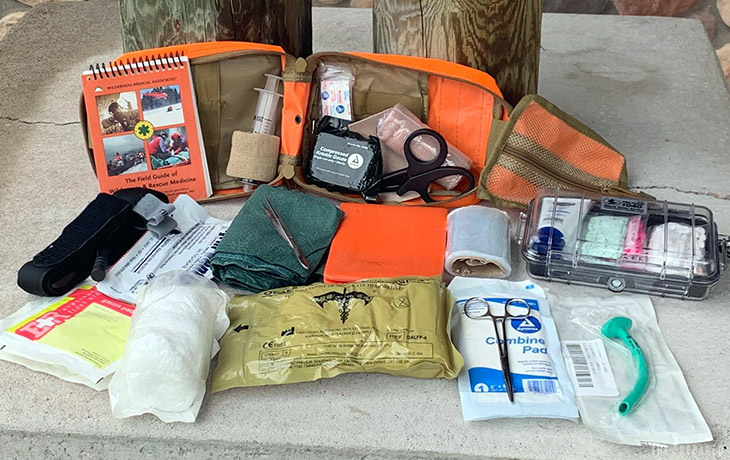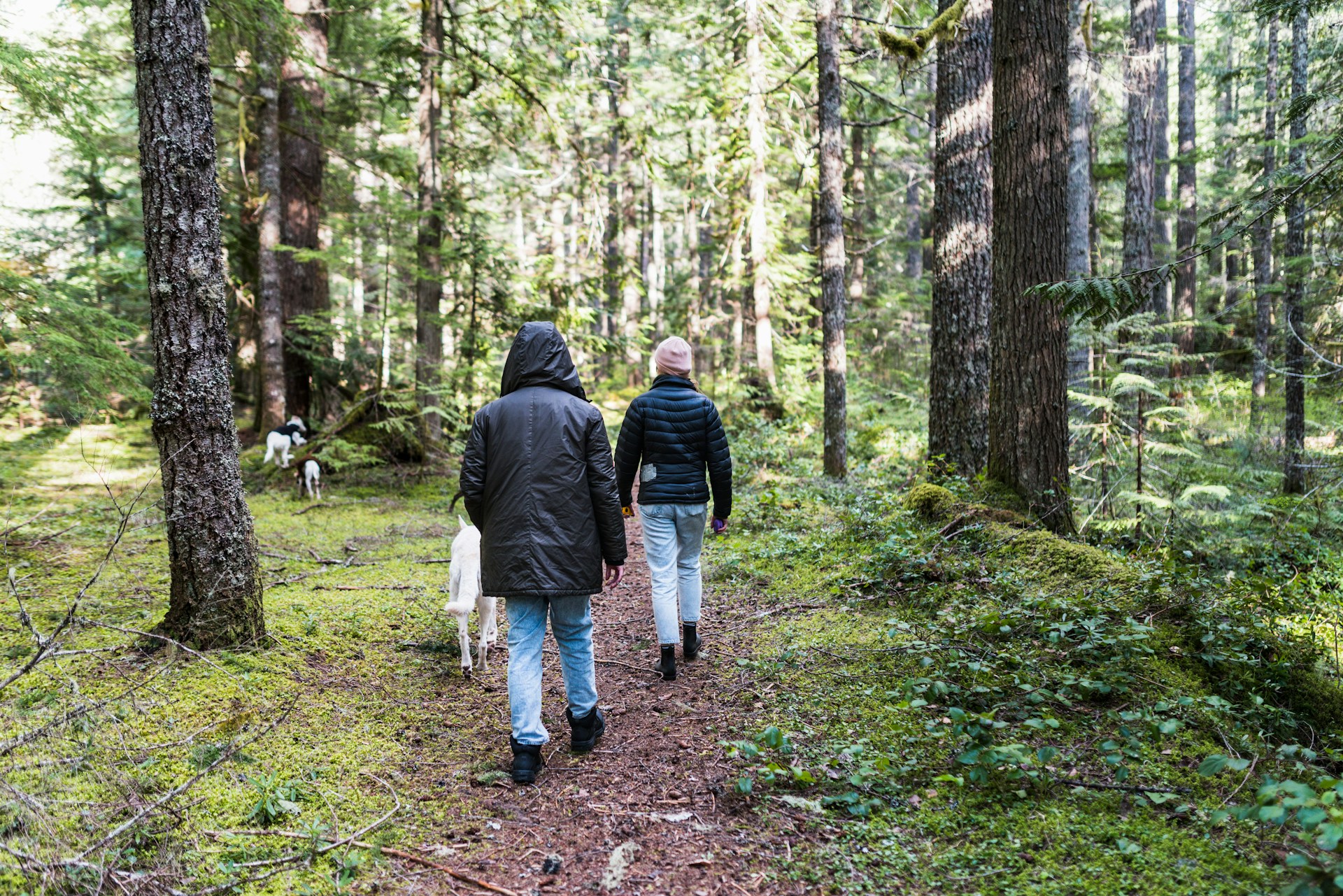Preparedness
Essential First Aid Gear Every Prepper Needs

In times of emergency, having the right first aid supplies can be a game-changer, potentially saving lives when professional medical help isn’t available. For preppers, who prioritize self-reliance and preparedness, a well-stocked first aid kit is essential. It ensures that you can manage injuries and illnesses without immediate access to hospitals or medical professionals.
A comprehensive first aid kit should cover basic wound care, essential medications, and tools for assessing and treating medical emergencies. This includes items like gauze pads, bandages, antiseptic ointments, and medical tape. Trauma shears are also crucial for cutting away clothing in emergency situations.
“Customize your kit based on your family’s needs, skill level, and likely risks.” This means considering the specific medical issues you might face based on your environment and personal health conditions. It’s also important to have over-the-counter medications for managing minor illnesses and symptoms when professional care is not an option.
Regularly rotating your stock ensures that medications remain effective and don’t expire. Proper storage is key to maintaining the viability of your supplies. Use waterproof containers and store them in cool, dark places to protect against environmental damage.
In addition to supplies, having the right knowledge and training is crucial. Taking courses offered by organizations like the Red Cross can provide hands-on experience in emergency medical skills, such as CPR and fracture management. “This emergency first aid training prepares you to potentially save lives when professional medical care is not available.”
Reference materials are also invaluable. Books like “Where There Is No Doctor” and “The Survival Medicine Handbook” offer practical advice and should be part of your medical library. These resources can guide you in diagnosing and treating health issues during emergencies.
Hands-on practice is essential for retaining skills. Regularly rehearse emergency techniques to build muscle memory and confidence. This preparation ensures that you can remain calm and effective when real emergencies occur.
Managing your first aid supplies effectively is another critical aspect of preparedness. Keep an up-to-date inventory, check expiration dates, and restock items as needed. Designate a secure storage area in your home, and use clear labeling for quick access during emergencies.
Proper organization of your supplies enhances your ability to respond effectively. Group related items together and clearly label kits based on their intended use. This smart organization allows for efficient response when health issues arise.
Preparedness goes beyond having supplies; it involves continuous education and skill enhancement. Engage with online resources, community groups, and training programs to expand your knowledge and capabilities. “Advancing first aid abilities via continuous education and upgraded gear improves readiness to handle more complex emergency health situations.”
By prioritizing first aid preparedness, you can mitigate reliance on professional healthcare during unstable times. This proactive approach ensures that you are equipped and knowledgeable to handle medical emergencies, potentially saving lives when traditional healthcare is inaccessible.
Let us know what you think, please share your thoughts in the comments below.

Preparedness
Ticks in the Wild What You’re Missing About Risks

When venturing into the great outdoors, ticks are often a concern for many. Despite their reputation, there are numerous misconceptions about these small creatures that need clarification. Here’s what you should understand about ticks and the actual risks involved if you get bitten.
First and foremost, it’s important to know that tick bites rarely cause harm. Millions of Americans experience tick bites annually, but only a fraction result in illness. The most recognized tick-borne illness in the United States is Lyme Disease, a bacterial infection known for its potential to cause severe, long-lasting complications.
However, contrary to popular belief, most Lyme Disease cases are resolved with a single round of treatment. Only about 10 to 20 percent of cases develop into what is known as Chronic Lyme Disease, Post Lyme Disease Syndrome, or post-treatment Lyme Disease. The reasons why some individuals suffer from the chronic form remain unclear, though symptoms typically improve within six months to a year.
It’s crucial to note that the risk of contracting Lyme Disease varies significantly by region. The Upper Midwest, the Virginias, and the Northeast, particularly Pennsylvania, report the highest number of cases. In contrast, states like Oklahoma and Hawaii reported no cases in 2019, and others like Alaska and Wyoming reported only a few.
Despite these statistics, taking precautions when spending time outdoors is always wise, especially in areas with higher incidences of tick-borne diseases. Here are some essential steps to protect yourself and your loved ones:
Avoid tick habitats: Ticks thrive in well-foliaged areas such as high grasses, dense woods, and leaf piles. Avoid these areas and keep pets away from them as well. When hiking, stick to the center of trails and choose clear campsites.
Treat clothing with tick repellent: The CDC recommends using specific substances to repel ticks effectively. Find the right repellent for you using their search tool.
Dress appropriately: Light-colored clothing, such as white or tan, makes it easier to spot ticks. Tuck pant legs into socks when outdoors to prevent ticks from reaching your skin.
Check your body for ticks: Ticks can be tiny, some as small as a poppy seed. Thoroughly inspect your body, paying close attention to joints, hair, and behind the ears. Remember, “It takes 36 hours for disease-causing bacteria to get into your system. If you remove a tick before that, your chances of getting Lyme Disease are very low.”
Shower after outdoor activities: Showering can wash off unattached ticks and provides an opportunity for a thorough body check.
Dry your clothes: Tumble dry clothing for 10 minutes to eliminate any ticks that might have hitched a ride indoors.
Proper tick removal: Use fine-tipped tweezers to grasp the tick close to the skin’s surface and pull upward with steady pressure. Avoid twisting or jerking to prevent mouth-parts from breaking off. If mouth-parts remain, attempt removal with tweezers or allow the skin to heal naturally.
Dispose of ticks properly: Never crush a tick with your fingers. Dispose of it by putting it in alcohol, sealing it in a bag, wrapping it in tape, or flushing it down the toilet.
Most tick bites are harmless and cause only a momentary scare. However, seek medical attention if you cannot remove a tick, if the bite area becomes infected, or if you suspect a deer tick has bitten you. By understanding the facts and taking proper precautions, you can enjoy the outdoors with peace of mind.
Let us know what you think, please share your thoughts in the comments below.
Preparedness
Essential OTC Medications Every Prepared Household Needs

When preparing for emergencies, having a well-stocked home pharmacy is as crucial as any other survival gear. While prescription medications are essential, over-the-counter (OTC) medications can address a wide range of common ailments and should be part of your preparedness plan. Here’s a guide to stocking your home pharmacy with essential OTC medications.
First, evaluate the specific health needs of your household. Consider whether any family members have allergies to medications, require infant or child formulations, or have chronic conditions that necessitate special care. It’s also important to think about seasonal allergies and pain management needs. Your stock should cater to everyday requirements, not just emergencies.
Once you’ve assessed your family’s needs, ensure that your medications are stored correctly. “Generally, medication will store best in a cool, dry, dark location in the original unopened packaging.” The bathroom medicine cabinet is not ideal due to heat and humidity, and all medications should be stored out of children’s reach.
Safety is another consideration. With the prevalence of drug addiction, it’s wise to store prescription medications in a locked safe or well-hidden location to protect both the medications and those who might misuse them.
It’s crucial to keep your medications fresh, but understanding the actual shelf life can be important in a crisis. “You should expect a gradual loss in potency over time for OTC medication,” but if the appearance and color of the pills remain unchanged, they are likely safe to use. Be aware that liquid preparations typically have a shorter shelf life than tablets and capsules.
For pain relief, consider keeping aspirin, Tylenol, Aleve, Advil, and Excedrin on hand. Each of these medications targets different types of pain, such as headaches, muscle aches, and inflammation. Orajel is useful for dental pain, while Midol and AZO Urinary Pain Relief can address specific needs like menstrual discomfort and urinary tract pain.
For allergy relief, options include Allegra, Benadryl, Claritin, and Zyrtec. Each works differently, so it’s important to find out which is most effective for you. Cold and flu symptoms can be managed with Dayquil, Nyquil, Mucinex DM, and Robitussin, among others.
Digestive issues are another concern during emergencies. Alka-Seltzer, Dulcolax, Imodium, Milk of Magnesia, and Gas-X can help manage symptoms ranging from indigestion to constipation and diarrhea.
For skin issues, Aspercreme, Cortizone 10, Lotrimin, and Technu are useful for treating conditions like itching, burns, and fungal infections. Triple Antibiotic Ointment is essential for preventing infections in minor cuts and wounds.
Additional useful items include activated charcoal for poison absorption, Dramamine for nausea, Epsom salt for muscle relief, and potassium iodide tablets for radiation emergencies. Don’t forget electrolytes for hydration, QuikClot for bleeding, and multivitamins to ensure adequate nutrient intake.
Remember, this information is not a substitute for medical advice. “I encourage you to do your own research and talk to your doctor to make sure you’re not allergic to any of these medications and to make sure they won’t interfere with any other medications you’re taking.” Your home pharmacy should be tailored to your family’s unique needs, ensuring you are prepared for whatever comes your way.
Let us know what you think, please share your thoughts in the comments below.
Preparedness
Choosing the Right Generator for Ultimate Preparedness

In the realm of disaster preparedness, having a reliable power source can make a world of difference. Whether you opt for a solar or fuel generator, each has its unique advantages and challenges.
Solar generators, for instance, are celebrated for their silent operation. This means you can rest easy at night while your portable power station quietly supplies energy. Additionally, these generators are generally lighter than their gas-powered counterparts, with the main component being a battery. This makes them more manageable in terms of transport and setup.
Maintenance is another area where solar generators shine. They are known for their reliability in tough situations and require minimal upkeep. Over time, they prove to be cost-effective as they don’t require fuel, saving you money in the long run. However, the power output of solar generators isn’t as consistent as gas generators. Charging times can be lengthy, particularly when the sun is obscured by smoke or clouds.
On the other hand, gas generators boast consistent power output. As long as you have fuel, they will keep running, regardless of weather conditions, except in extreme cold when fuel might gel. These generators can power a wide range of equipment, making them versatile for home or travel use.
However, gas generators can be quite noisy, potentially attracting unwanted attention. They also come with a host of parts that require regular maintenance to prevent failure. This upkeep, coupled with fuel costs, can add up over time, making them a more expensive option.
When choosing between solar and gas generators, understanding their ratings is crucial. For gas generators, the focus is on their Wattage (W) rating, often expressed in Kilowatts (kW). It’s important to ensure the generator can handle the initial surge of power required by some devices. For instance, a dishwasher might run at 1200W but need 3000W to start.
Solar generators, in contrast, are rated by Amp hour (Ah), which measures how much electricity can flow from the battery over a period, typically 20 hours. Calculating the total Amps needed involves adding up the Amp rating of all devices you plan to run simultaneously.
For those with modest power needs, such as charging a laptop or phone, a full-scale generator might be unnecessary. Alternatives like solar power banks or combo solar/hand-cranked radios can provide sufficient energy while remaining portable and easy to use.
Ultimately, the choice between solar and fuel generators depends on your specific needs and circumstances. Each type offers a unique set of benefits and drawbacks, but both can provide essential power when you need it most.
Let us know what you think, please share your thoughts in the comments below.
-

 Tactical1 year ago
Tactical1 year ago70-Year-Old Fends Off Intruder with Lead-Powered Message
-

 Tactical1 year ago
Tactical1 year agoVape Shop Employee Confronts Armed Crooks, Sends Them Running
-

 Preparedness11 months ago
Preparedness11 months agoEx-Ballerina’s Guilty Verdict Sends Tremors Through Gun-Owner Community
-

 Preparedness9 months ago
Preparedness9 months agoGood Samaritan Saves Trooper in Harrowing Interstate Confrontation
-

 Tactical1 year ago
Tactical1 year agoMidnight SUV Theft Interrupted by Armed Homeowner’s Retaliation
-

 Survival Stories2 years ago
Survival Stories2 years agoEmily’s 30-Day Experience of Being Stranded on a Desert Island
-

 Preparedness9 months ago
Preparedness9 months agoArizona Engineer’s Headless Body Found in Desert: Friend Charged
-

 Preparedness9 months ago
Preparedness9 months agoBoy Saves Dad from Bear Attack with One Perfect Shot